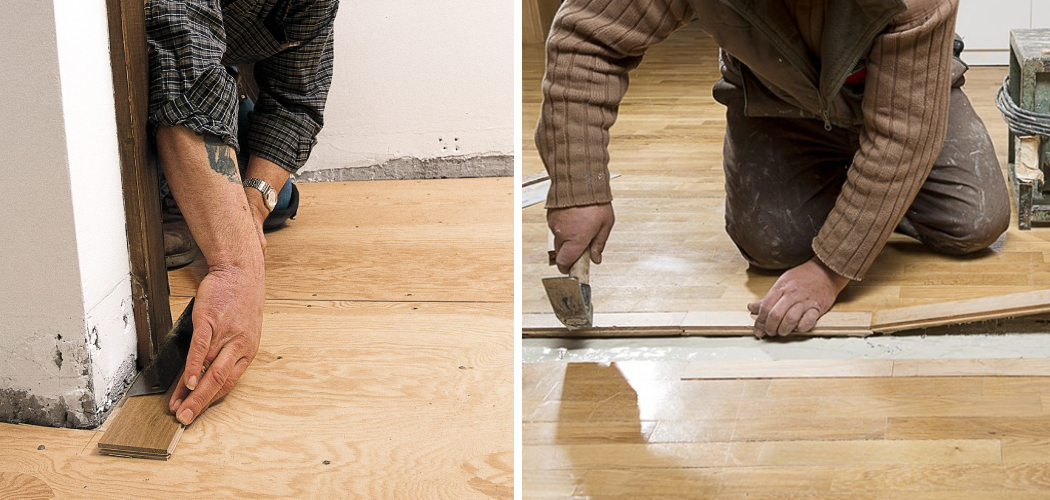Water damage on engineered wood floors can be an especially tricky issue to deal with since many cleaning solutions and repair methods used for traditional hardwood floors won’t work on this type of flooring. It can also be difficult to tell the source of water, or how much damage has already been done. Fortunately, there are steps you can take to repair water-damaged engineered wood floors and get them back looking as though they were never damaged in the first place!
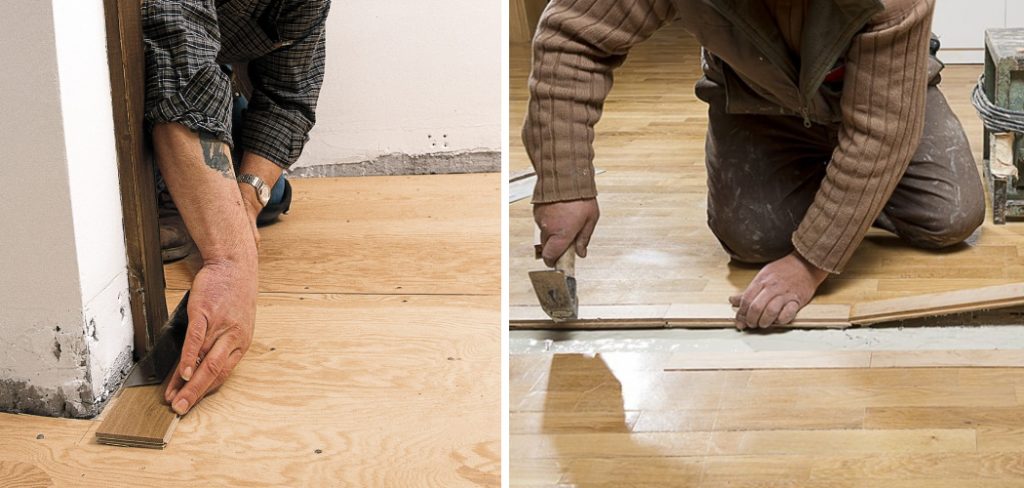
In this blog post on how to repair water damaged engineered wood floors, we will cover what causes water damage in engineered wood floors, identify what types of repairs need to be made depending on the severity of the damage caused by moisture, as well as provide step-by-step instructions detailing how best to remediate each situation.
11 Step-by-step Simple Instructions on How to Repair Water Damaged Engineered Wood Floors
Step 1: Identify the Source of Water
Troubleshoot the source of water in order to remove it and prevent further damage. If the source of water is from a leaking pipe or appliance, be sure to shut off the water supply and contact a plumber.
If the water originated from an overflowing sink or bathtub, make sure to mop up as much water as possible in order to reduce further damage. But if you’re unable to identify the source of water, then you will need to proceed with caution in order to prevent further damage.
Step 2: Remove Excess Water
Using a dry, absorbent cloth or towel, remove any standing water on the floor. If the water has spread to multiple areas, use a wet/dry vacuum cleaner in order to remove as much moisture from the flooring as possible. It is important to note that you should never use a steam cleaner on engineered wood floors, as this can cause further damage. You may also need to use a dehumidifier in order to draw out any moisture that has seeped into the subfloor.
Step 3: Dry the Flooring Thoroughly
Use fans and dehumidifiers to speed up the drying process and reduce further damage from occurring. It’s important that you let your floors dry completely before proceeding with any repairs or restoration efforts.
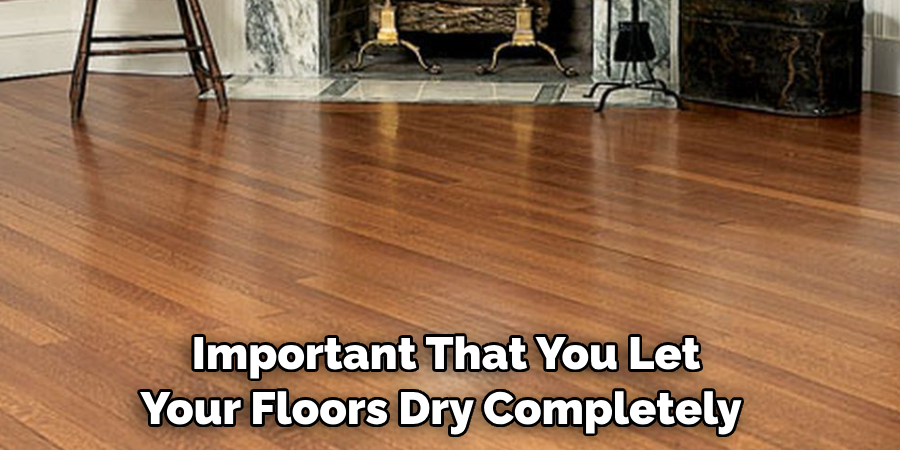
But, make sure you are monitoring the temperature and humidity levels during this process as well in order to prevent further damage. It’s also important to note that you should never attempt to use a hairdryer or heat gun on engineered wood floors, as this can cause the material to warp or buckle.
Step 4: Inspect for Warped Areas
Look closely at the area to see if there are any warps in the engineered wood planks caused by excess moisture. If so, then you may need to replace some of the affected boards. It’s important to note that replacing boards can be difficult, so it’s best to consult a professional for help.
It’s also important to make sure the new boards match the existing ones as closely as possible in order to achieve a seamless look. It’s best to try and replace boards from an unobtrusive area in order to achieve this.
Step 5: Replace Necessary Boards
If there are warped boards, start by removing them and replacing them with new boards that match the original color and type of engineered wood. This process may require some skill and expertise, so it’s best to hire a professional for help. It is also important to remember to check the underside of the boards for any signs of water damage before installing them.
Step 6: Sand the Floors
Sand down any uneven surfaces before applying a new finish. This will help to even out the flooring and get rid of any remaining water damage. But make sure you use the correct grit sandpaper for your specific type of flooring and wear appropriate safety equipment. This will help to ensure that the sanding process goes smoothly and your floors look even in the end.
Step 7: Apply New Stain & Finish
Apply a new stain that matches the existing color of your engineered wood floors, followed by a protective finish such as polyurethane or wax sealant. Be sure to apply two coats for optimal protection. But make sure you read the instructions on the stain and finish products that you are using in order to ensure proper application. It’s also important that you are wearing the proper safety equipment when applying finishes.
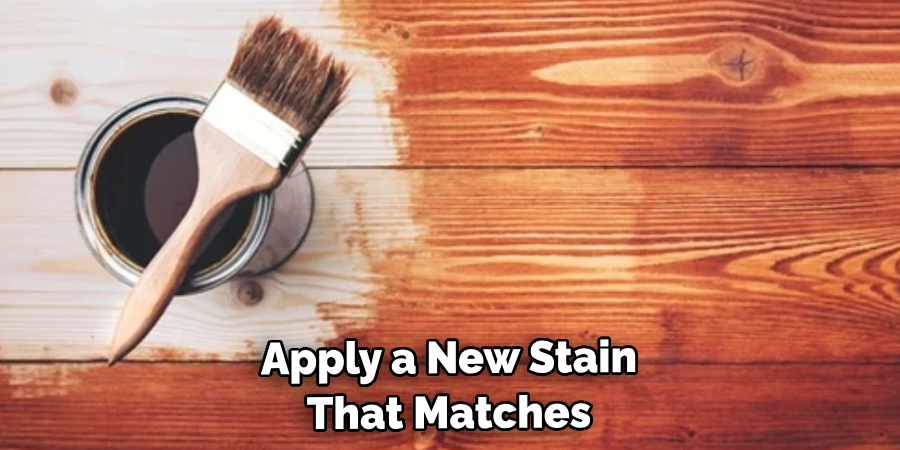
Step 8: Clean Up After Yourself
Once all repairs have been made, be sure to clean up any sawdust or debris left behind from sanding the floors. Vacuum up all dust particles and wipe down the surface of the floors with a damp cloth. This will help to ensure that the floors are free from debris and dirt before a new protective finish is applied. It will also help to make sure that you have a clean surface for the new finish to adhere to.
Step 9: Let the Floor Dry
Allow your newly repaired floor to dry completely before walking on it or moving any furniture back in. This will help to ensure that the new finish has had time to properly adhere to the surface of the floor. If you rush this step, it can cause the new finish to chip or peel away prematurely. If you are in a hurry, try to keep the temperature and humidity levels low during this process.
Step 10: Vacuum & Mop Regularly
Regular vacuuming and mopping will help keep your engineered wood floors clean and free from dirt, debris, and other contaminants that can cause water damage over time. It’s also important to remember to use the correct cleaners when mopping your floors. Some engineered wood flooring requires special cleaning solutions as well, so be sure to check the manufacturer’s directions before you start.
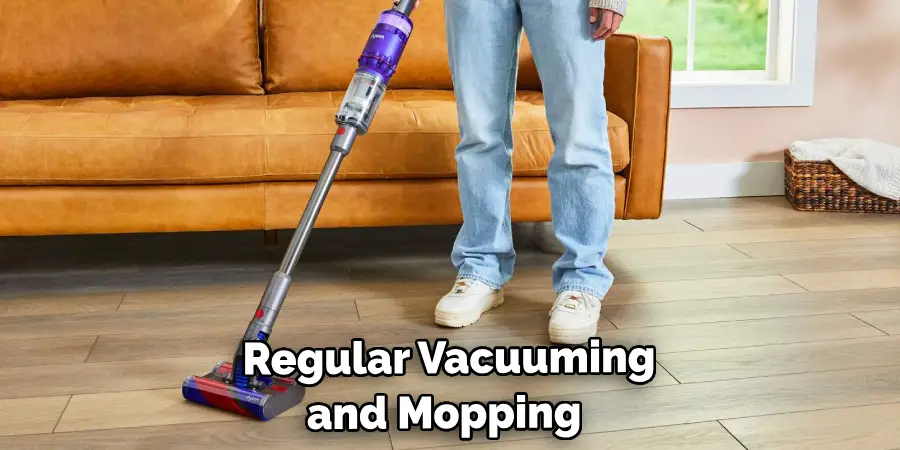
Step 11: Seek Professional Help if Needed
If at any point during this repair process, you feel overwhelmed or unsure of what steps to take, don’t hesitate to contact a professional for help with repairing water-damaged engineered wood floors. A qualified technician can assess the situation and provide you with the best course of action to repair your floors.
Following these 11 steps on how to repair water damaged engineered wood floors will help ensure that your flooring is restored to its original condition and protected from future water damage. Doing a little bit of prevention now will save you time, money, and headaches down the line!
Frequently Asked Questions
Q: What Should I Do if My Engineered Wood Floors Are Exposed to Water?
A: If your engineered wood floors have been exposed to water, it’s important to act quickly and thoroughly dry out the area. Start by troubleshooting the source of water, then remove any standing water with an absorbent cloth or towel.
Use fans and dehumidifiers to speed up the drying process and reduce further damage from occurring. Once everything is dry, inspect for warped areas and replace any necessary boards before sanding down uneven surfaces and applying a new finish.
Q: Does Insurance Cover Water Damage on Engineered Wood Floors?
A: It depends on your individual insurance policy, so it’s best to contact your insurer directly in order to find out if they will cover repairs or replacement costs for engineered wood floors that have been damaged by water.
Q: How Can I Prevent Water Damage on My Engineered Wood Floors?
A: To prevent water damage from occurring, make sure to vacuum and mop your floors regularly. Also, be mindful of the type of cleaners you use as some may cause discoloration or weakening of the finish. If you’re in an area prone to flooding, consider installing a sump pump or other waterproofing measures to protect your flooring.
Q: How Much Does it Cost to Repair Water Damaged Engineered Wood Floors?
A: The cost of repairing water damaged engineered wood floors can vary depending on the severity of damage and the type of repair needed. In most cases, you will need to replace certain boards or even redo the entire floor if extensive damage is present. Additionally, labor costs for installing new boards or refinishing the flooring may also be included in your overall repair costs. It’s best to contact a professional for a more detailed estimate prior to starting any repairs.
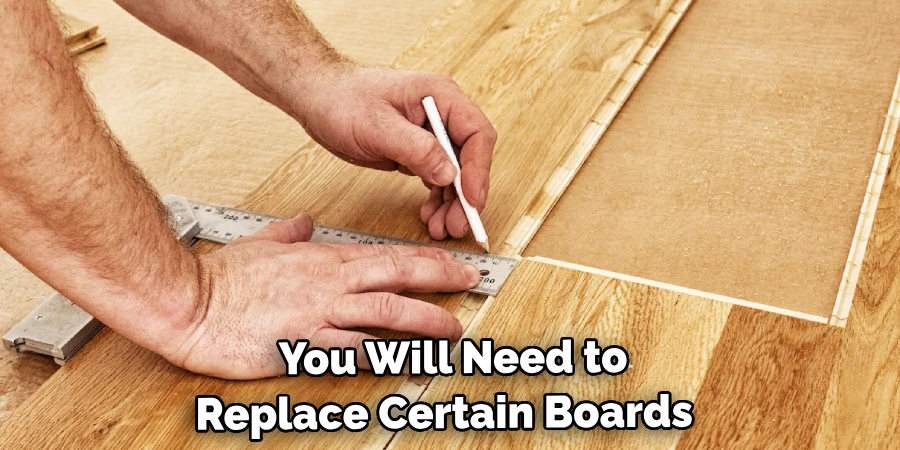
Conclusion
Thanks for reading this article on how to repair water damaged engineered wood floors. It is important to take proactive steps to repair water damaged engineered wood floors as soon as possible. If you are concerned about a possible leak in your home or business, make sure to contact a professional as soon as possible. If the water damage is causing visible damage to the floor, many repair kits are available that can help with minor damage and staining.
However, if the damage is too severe, or if you just want a complete transformation of your flooring, replacing your engineered wood floor will give it a fresh start and can last for years to come. Repairing or replacing water damaged engineered wood floors can be accomplished with some standard tools and supplies from any home improvement store. With proper maintenance and regular cleaning, your engineered wood floors will look beautiful for years to come!

